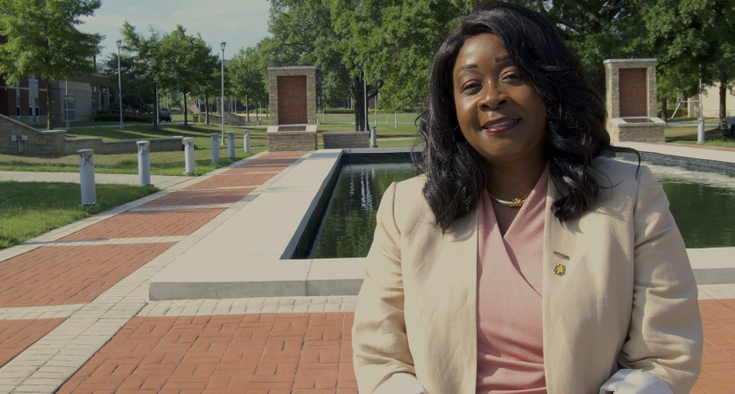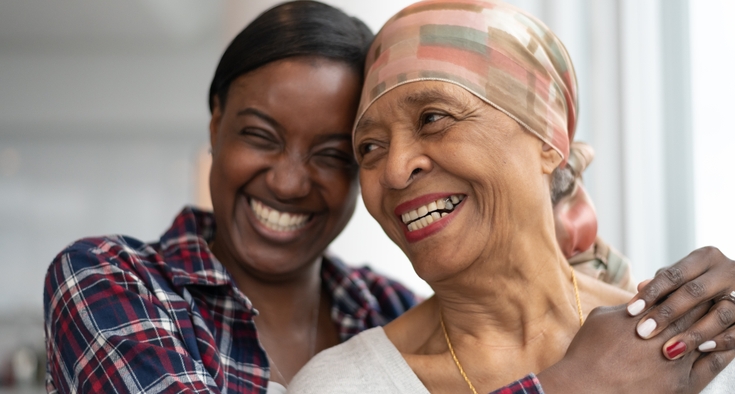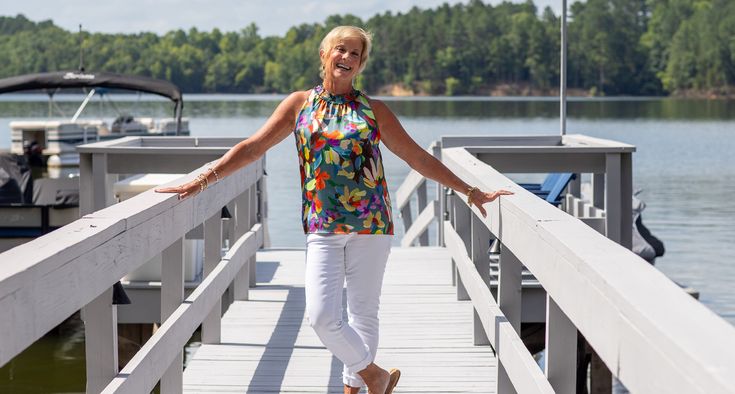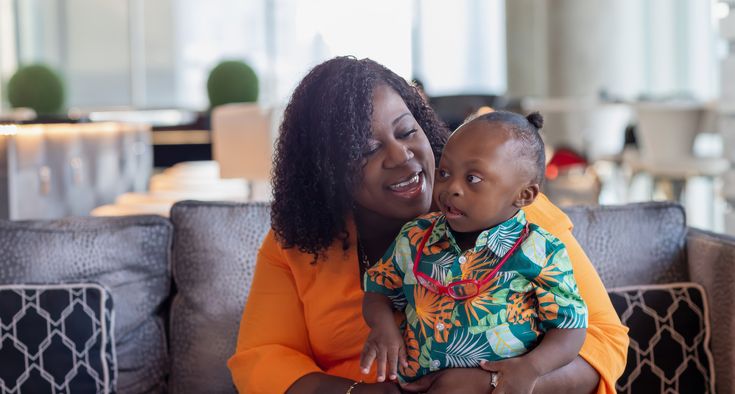Keyona Bostick, Ph.D. didn’t have time for cancer.
So, when the assistant vice chancellor of HR operations at North Carolina A&T State University was diagnosed with multiple myeloma – a blood cancer that develops in the bone marrow – she told Dr. Kathleen Elliott, a hematologist with Novant Health Cancer Institute - Thomasville, that she didn’t plan to treat it.
That was April 2023. Though only 50 at the time, Bostick felt she’d lived a long, happy life and that – as she said – “I’m a true believer in God. Everybody has a birth day, and everybody has a death day. If this was my time, then it was my time.”
“I wasn’t sad,” she said. “I wasn’t mad. I wasn’t even shocked. My faith is strong, and I just accepted this as part of my journey. I mostly felt … aggravation. I don’t like being inconvenienced, and cancer was a major inconvenience.”
Bostick developed a hard shell at a young age. She lost her mother and her brother when she was only 12. “I had to create this strong armor around me to move forward with life,” she said.
“My father was diagnosed with cancer years ago,” she added. “And one of my close childhood friends has had cancer, and I saw what chemotherapy and radiation did to them. I told Dr. Elliott I didn’t want to change my lifestyle. Plus, I work in Greensboro, and the cancer center is in Winston-Salem. I didn’t want to drive back and forth.”
Specialized care for your cancer diagnosis.
Listen without judgment
Elliott listened and took Bostick’s concerns seriously.
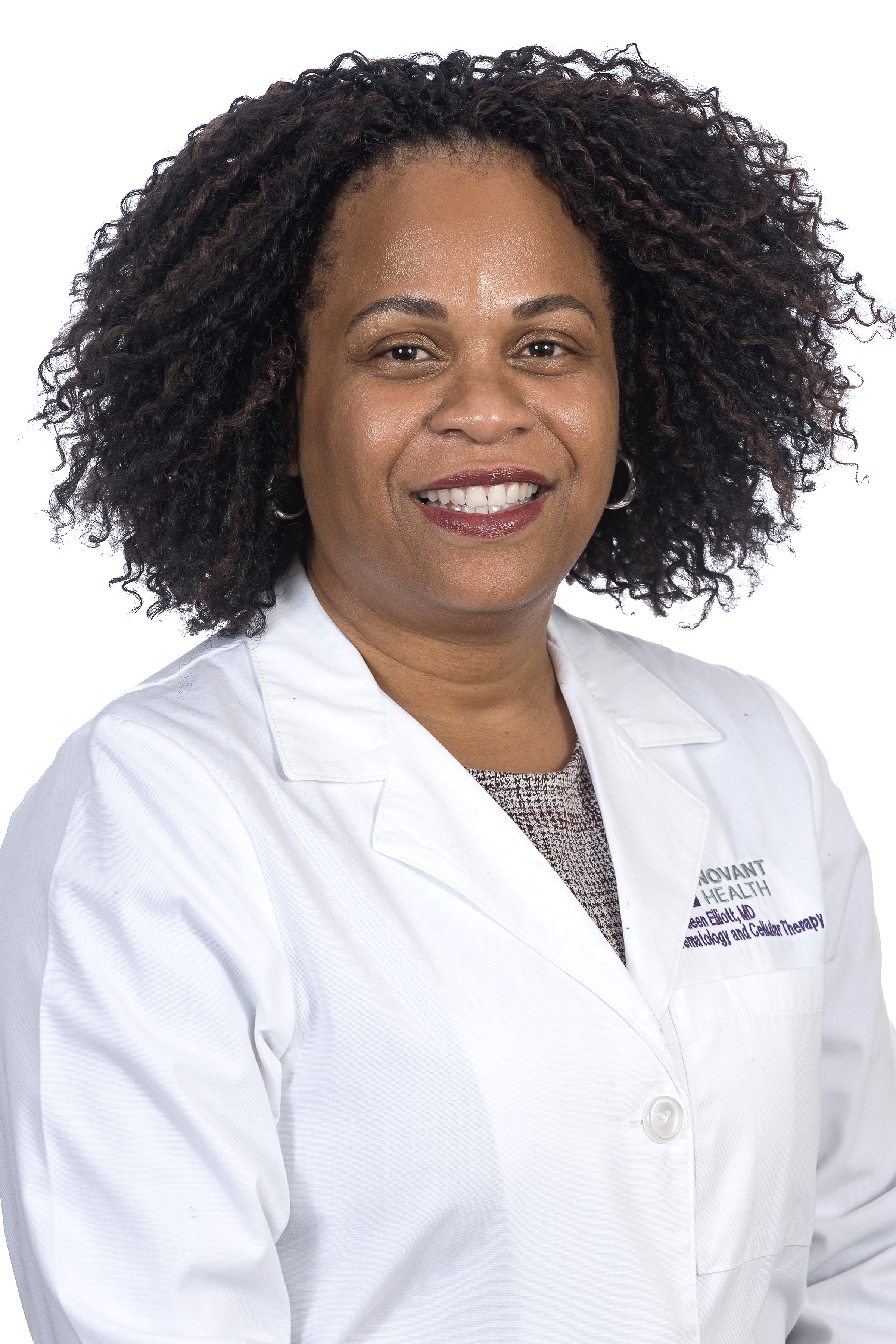
“I was taken aback to hear someone fairly young and healthy say she didn’t want treatment,” she recalled. “Blood cancers are typically very treatable. I asked her to take some time to think about it, talk it over with family and friends before she made her decision.”
Bostick did appreciate Elliott’s thorough detailing of the treatment plan. “And one thing that helped me come around is how compassionate she was about my feelings. She wasn’t forceful. She allowed this to be my decision, and she gave me peace of mind. I probably asked her 1,000 questions. She answered every one of them to my satisfaction.”
Being an academic, Bostick did her research, consulted her nurse friends, talked to someone who’s been successfully treated for multiple myeloma. When she returned a week later, Bostick was ready to say, “Sign me up. I'm doing it.”
Something else that helped push Bostick toward saying yes to treatment: Novant Health was opening a new cancer center in Greensboro. She could receive her chemotherapy – four rounds of it – just four miles from her office. (For the first year the center was open, Elliott divided her time between Greensboro and Winston-Salem. Since she’s now practicing in Winston-Salem and Thomasville, another doctor – hematologist Dr. Franklin Chen – is now in the Greensboro clinic.)
“I considered that my sign from God,” Bostick said about the new center. “Everything started falling in line. I could get to my appointments from my office in less than eight minutes. And they made my appointments for the time of day I requested. I mean, I ran out of excuses. They made everything so convenient.”
Bostick became one of the first patients to receive chemotherapy at the Novant Health Cancer Institute Greensboro office.
“I will not let this interrupt my life” was her mantra throughout.
And indeed, Elliott said, “She was able to keep up with her daily responsibilities and work full-time during treatment. She was even holding meetings from the hospital while receiving the stem cell transplant.”
Top scores for safety in NC
Novant Health received the most ‘As’ for patient safety in North Carolina
from The Leapfrog Group. With a focus on safety, quality and patient
experience, the national, industry-leading nonprofit, evaluates and
assigns letter grades ranging
from A to F to hospitals across the country. Novant Health’s hospitals with “A”
grades outperform 70% of hospitals nationwide for safety and quality.
Understandable reluctance
Elliott said many of her Black patients are skeptical of the health care establishment.
It’s easy to see why that might be. “African Americans have a higher cancer burden and face greater obstacles to cancer prevention, detection, treatment and survival,” according to the American Cancer Society. “In fact, Black people have the highest death rate and shortest survival of any racial/ethnic group for most cancers in the U.S.”
It’s not just a perception problem. Cancer death rates in Black men are twice as high as in Asians and Pacific Islanders, who have the lowest rates. Black women don’t fare any better. They’re 40% more likely to die of breast cancer than white women and twice as likely to die if they’re younger than 50.
Elliott sees the reticence often in her practice. “Many of my patients are reluctant to accept their diagnosis and follow the recommended treatment.”
But based on Bostick’s age and the fact she had few medical problems going into this, Elliott recommended the standard of care, which is induction chemotherapy, followed by a stem cell transplant followed by maintenance chemotherapy.
Working through it
Bostick wanted her life with cancer to resemble her life before cancer as closely as possible. And Elliott did her best to accommodate.
She has a demanding job – one she loves – and she didn’t want to miss any work, if possible. In her role at North Carolina A&T, she provides guidance and oversight to a team responsible for employee benefits and the HR information system. She’s also responsible for data integrity and payroll operations.
She worked for the duration of her hospital stay. “That kept my mind off of what was going on,” she said.
It was also important to her that the news be kept quiet. “No one at work knew I’d been diagnosed except my supervisor and our employer relations manager,” Bostick said. “I didn’t want a lot of people calling to check up on me. I told my immediate family, and that was it – for a very long time. I wanted to keep a kind of normalcy.”
Transplant time
For a couple of weeks prior to her transplant, Bostick prepared. “I took medications to stimulate my bone marrow,” she said. “Then, days before the transplant, they gave me a very high dose of chemotherapy through my port.”
She had no immediate side effects from that, but she did feel nauseated about a week later. And she ultimately lost her hair. But she aced the transplant. (See sidebar for more on how a transplant works.) Bostick continues to feel healthy and strong.
Her doctor marvels at her dedication to her job – and the way in which work helped Bostick feel normal when life was out of control. “Throughout this whole ordeal, she worked every day,” Elliott said about Bostick. “Even during her hospitalization.”
“She has done so well with treatment and was able to maintain her quality of life throughout all of this,” Elliott continued. “That’s a good message to get out there. We’ve come a long way with cancer treatments. Not all – but many – patients are able to get effective treatment and maintain their quality of life.”
And Bostick – who had initially been resigned to let cancer take its course, now calls her treatment “one of the best experiences of my life.”
Three steps to a stem cell transplant
Blood stem cells, produced in our bone marrow, can become any kind of blood cell the body needs. “Stem cells are constantly dividing and maturing into different types of blood cells, replacing older and worn-out blood cells in the body,” according to the Leukemia & Lymphoma Society. “If the stem cells cannot make enough new blood cells, serious health problems can occur.”
When cancer (or cancer treatment) destroys stem cells, doctors may recommend a transplant. A stem cell transplant is a three-step process, explained Dr. Kathleen Elliott, a hematologist with Novant Health Cancer Institute - Forsyth.
- Stem cell collection. “Patients get a shot for a few days to increase stem cell production, and then, their blood is drawn and the stem cells are separated out,” Elliott said. The collected stem cells are then frozen and stored until needed.
- Immunotherapy treatment begins. Patients are admitted to the hospital – where they remain for about two weeks – and receive high doses of chemotherapy, which destroys cancer. (While Keyona Bostick was able to get nearly all her treatments in Greensboro, she went to Novant Health Forsyth Medical Center for the transplant.) Patients receiving transplants have to guard their immune systems, so visitors must be limited. Bostick’s husband, Gerald Bostick, and her adult daughter, Keyaria, were able to visit in the hospital.
- The stored stem cells are given back to the patient through an IV. “Then, we wait for the transplanted stem cells to travel to the marrow where they start making new cells,” Elliott said. “That helps the body recover from treatment.”
About 90 days post-transplant, patients have a second bone marrow biopsy to gauge the success of the transplant – and to determine if they can move on to the maintenance phase. Since there’s an overall survival rate of 85% for stem-cell patients (when measured at 76 months, or a little over six years, after their transplant), nearly everyone moves on to the maintenance phase about three months post-transplant. Bostick did, too.
“For most people, maintenance means a lower dose of chemotherapy they take in pill form every day for at least two years,” Elliott said. “During that time, we’re also monitoring their blood work and markers.”





